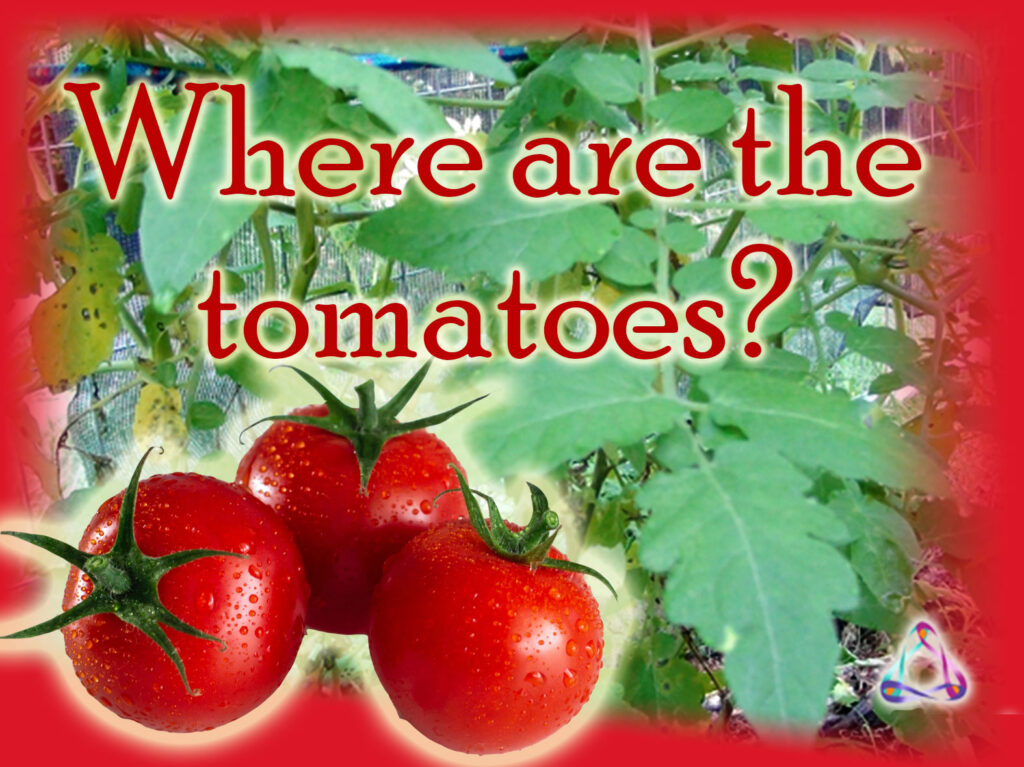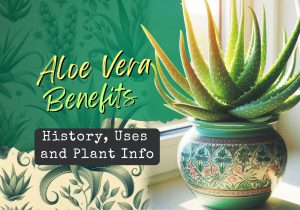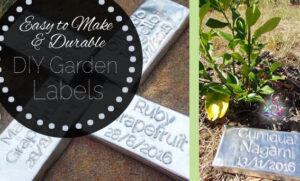Tomatoes are said to be one of the easiest plants to grow in the garden. But this may not always be true, especially when the plant grows plenty of leaves… but hardly any fruit.
I have been experimenting with different varieties of tomatoes in the garden this year. Here in the sub-tropics, I have started seedlings halfway through the spring. Other tomato plants, which were dormant in the winter, have started to bloom and are growing large and strong… but have barely any fruit. Actually, they were flowering but many of them were simply dying and turning brown.
I was searching for a solution to the problem and here is what I discovered.
To understand why this happens, let’s first understand the basics of how Mother Nature works.
Flowers from a seed plant consists of two main parts: the stigma (female part) and the anther (male part). For successful pollination, a pollen grain produced by the anther must be transferred to the stigma. 1
Tomato plants are self-pollinating, which means that the flowers within the same plant contains both the female and male parts – all it needs to create fruit without depending on other plants for reproduction.
The tomato plant relies on pollination of its flowers for it to start its fruit production. For this to happen, some movement has to occur so that the pollen can be transferred. Usually, this movement comes from bees or the wind.
It is said that the solution to the problem may be to shake the plant so that the pollen is taken to the right place. But even this technique may not completely solve the problem either.
There are a few other possible reasons as to why the tomato plants are not fruiting.
- Tomato plants like the heat…. but not too much of it. In places where there is too much heat: above (85-90 °F, or 29-32°C) during the day and (75 °F, or 23°C) at night, (sub-tropics and the tropics) seeds become unproductive, but this also depends on humidity.
- Tomatoes don’t like too much humidity. This is because the pollen can’t disperse as the water in the air makes it stick together.
- Tomatoes don’t like too much arid heat. The pollen then becomes too dry and doesn’t disperse. 2
- Tomatoes don’t grow as much fruit when there is too much nitrogen in the soil. Nitrogen encourages leaf growth, but not fruit growth. 5
Also remember that tomatoes require other things, too…
- Separated 2 feet apart
- Fed a lot of water
- 6-8 hours of full sun 3
- Requires more phosphorus to encourage fruiting.
If you are looking to purchase fertiliser, it is commonly recommended to choose one that has a high phosphorous ratio (middle number). The first number indicates the amount of Nitrogen, second Phosphorous and last Potassium. Nitrogen, Phosphorus, and Potassium (N,P,K). I tend to avoid most of these store-bought fertilizers because many of them are chemically/synthetically made and not environmentally friendly.
When it comes to gardening, the NPK ratios are observed. All of these nutrients are important, and if any one of these elements is missing, plants will not grow properly.13 For example, if you require lush leafy greens, adding more nitrogen is required. To encourage fruiting, we want to give the plant more phosphorous and for sweeter fruits and disease resistance, potassium.
Here is a little more info about each:
Nitrogen (N) is anutrient that encourages healthy large leaf and thick stem growth. Too little nitrogen causes yellow leaves and stunted growth. 7
Phosphorous (P) encourages healthy root formation and improves flowering and seed production. It also supports: increased resistance to disease and overall strong growth and development. 8
Potassium (K – Latin for ‘kalium’) strengthens plants, makes a better tasting fruit (juicer and sweeter) and helps to defend against disease. 9 (Also known as Potash)
You can find the right amount of the NPK ratio for tomatoes in natural garden compost. Garden compost ensures that your soil remains balanced.
I like to stick to all-natural organic fertilisers and use as much home-created as possible. Interestingly, I have found a few sources where diluted urine was used with wood ash for successful results in tomato fruit growth. Tests were undertaken in a Finnish University and results found this: the group that utilized this fertiliser quadrupled their fruit production when compared to the group that used no fertiliser. 6
If you can get over the smell and idea of icky-ness, using diluted urine frequently with your watering will top up nitrogen levels in the soil without spending a cent. Urine is rich in NPK (nitrogen, phosphorous and potassium), with a ratio of 10:1:4. It also contains other important trace elements which plants need. Even if you have healthy garden soil with plenty of compost and mulch, nitrogen moves through the soil and has a tendency to be washed away. It also gets converted to N2– a gas which evaporates into the air. 14
I find it works quite well. I add about a cup full to my watering can and am careful not to water the parts of the plant that will be eaten. The odour will dissipate pretty quickly. It is said to dilute with about 5-10 parts of water and use directly on the soil. 15
If you have an abundance of wood ash, spreading and mixing a small amount of it in the soil will provide tomatoes with potassium, needed for successful flowering. The calcium in the wood ash is needed to prevent rot and disease. 12
It may be an excellent idea to bury a banana peel next to your tomato plants to help boost fruit production. They contain magnesium and potassium, phosphorous and calcium, amongst vitamins B6 and B12. 10
Tomatoes also need magnesium to grow sweet and juicy fruit. Apparently, you will know if your tomato plants need magnesium if the leaves turn yellow. Sprinkle 1 cup (per square ft) Epsom Salts on your garden bed when first planting seedlings, then mix well into the soil. As they grow sprinkle 1 tablespoon per the foot height of your plant (2 times a month). 11
Some other good sources of phosphorous are: Fish Bone Meal, Rock Phosphate, Rock Dust and Chicken Manure. 4
Making sure you give your tomatoes what they need to thrive will ensure healthy and continuous growth.
So, at is turns out, in some situations tomato plants are not always easy to grow. They, too, prefer a specific climate and environmental conditions and nutrients and minerals for successful growth. If you suspect that the above problems may apply to you, it is best to choose heat tolerant varieties that are easiest to grow for maximum success.
1. https://en.wikipedia.org/wiki/Pollination
2. https://bonnieplants.com/2011/07/tomato-plants-not-setting-fruit-heres-why/
3. https://www.gardeningknowhow.com/edible/vegetables/tomato/tomato-blossoms-no-tomatoes.htm
4. http://www.grow-it-organically.com/organic-phosphorus-fertilizers.html
6. https://blogs.scientificamerican.com/news-blog/p-is-for-plants-human-urine-plus-as-2009-09-04/
7. http://www.abc.net.au/gardening/stories/s2476184.htm
8. http://www.cropnutrition.com/efu-phosphorus
9. http://www.abc.net.au/gardening/stories/s4292583.htm
10. https://themicrogardener.com/diy-fertilisers-how-to-use-banana-peels/
11. https://plantcaretoday.com/use-epsom-salt-sweeter-tastier-tomatoes.html
12. https://www.organicgardener.com.au/blogs/how-use-wood-ash
13-14. http://www.gardenmyths.com/soil-testing-npk/
15. https://www.rodalesorganiclife.com/garden/how-use-your-pee-planet
Photo of tomatoes by Ioan Ferezan on Unsplash





My partner and I stumbled over here from a different website and
thought I might as well check things out. I like what I see so i am just
following you. Look forward to checking out your web page again.